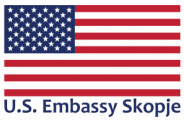Original title: One hundred euros per resident: NATO membership can cost us up to 200 million euros a year
The title and the text do not correspond to each other. In the article published by Republika.mk, the author of the text states that NATO membership “will cost our country quite a lot”, adding that “only in the name of membership fee we will have to pay one million dollars a year”. Furthermore, the author makes some calculations about how much the modernization of the Army will cost per capita, especially emphasizing the achievement of the threshold 2% of GDP for defense, which is allegedly “insisted by US President Donald Trump”, because it would be particularly difficult to set aside about 200 million euros for the Army amid a crisis caused by the coronavirus. Here, it is emphasized that “rarely does any country respect” the provision of 2% of GDP for defense.
The text concludes that NATO has a military and civilian budget, and that the Alliance is funded by a joint budget for which “member states allocate a portion of their defense budgets used directly by the Alliance.”
By distorting the facts, the portal is spinning in order to create the misconception that NATO membership will be a financial burden on the state that will negatively affect the handling of the coronavirus.
A link to the archived original article can be found here.
The conclusion/claim contained in the title that NATO membership can cost us up to 200 million euros per year is false and inaccurate. The F2N2 team previously wrote on this subject.
Let’s start from the beginning. All NATO allies are participating in the common budget with direct contributions, determined using a special cost-sharing formula based on the amount of gross national income (GDP). Although the text states that on behalf of the membership fee we will have to pay one million dollars per year, according to this formula, the amount of the annual membership fee for the Republic of North Macedonia will range from 1.2 to 1.5 million euros , which means that our country will contribute with 0.0721% of NATO’s annual budget. The funds from the annual membership fee go to the common budget, from which the funds are then distributed for the needs of the civil and military budget, as well as for the NATO Security Investment Program (NSIP).
Let’s underline:
The annual NATO membership fee is calculated with a special formula based on gross national income (GDP) for each member state separately;
The annual membership fee is part of the defense budget;
Our country should allocate 2% of the gross domestic product (GDP) for the needs of the Army;
But what is gross domestic product (GDP) and what is gross national income (GNI)?
А) GDP calculates what the economy produces
GDP = C[onsumption] + I[nvestment] + G[overnment purchases] + X [exports] – M [imports]
Б) GDI calculates what is earned from the sale of what is produced.
GDI = W[ages] + R[ental income] + I[nterest income] + P[rofits] In the past, our country has reached the threshold of 2% of the GDP defense budget several times. Here’s a chronological presentation of the defense budget from 2002 to 2019Source: Info Center for Euro-Atlantic Integration.
As we can see, in 2002, 2003 and 2005 the defense budget was over 2% of GDP, and in 2007 it was 1.91%. From 2008 to 2017, the defense budget fell sharply, reaching a record low of 0.93%. For 2020, the defense budget is projected at 1.4% of GDP, i.e. 10,133 billion denars (164.76 million euros). But that money does not flow from the state, but stays in.
But what is 2% of GDP? The money would be invested in improving barracks conditions, modernizing equipment and mechanization in line with NATO standards, in rapid response and rescue equipment, and investing in exercises to increase the military’s (interoperability) capability so that troops can participate in NATO missions, increase investment in cyber security and more. Also, in the allocated 2% of GDP, the salaries of the employees, equipment and means of work of the administrative-technical and military personnel are calculated, and with some of the money the combat and non-combat equipment of the army will be modernized, food will be provided for the army and spare parts. The investment in the equipment has a dual purpose, civilian and military, and the same equipment can be used in humanitarian and rescue missions and operations.
The country, without any problems, has financially withstood larger defense budgets over the past decade. In 2009, in conditions of global economic crisis, a budget of over 2% was envisaged, but with the supplementary budget it was reduced to 1.64%, a percentage that is still higher than the one that is allocated this year.
It is not true that US President Donald Trump insists on mandatory compliance with the minimum threshold of 2%. President Trump has only reaffirmed the Allies’ commitment to fulfilling this commitment made in 2006 and 2014. At the NATO Summit in Wales 2014, among other things, the following was agreed:
Allies currently allocating at least 2% of their gross domestic product (GDP) for defense to continue to do so;
Allies whose defense budget is below this will aim to reach the 2% threshold within a decade.. Earlier, former US President Barack Obama, as well as former Prime Minister of United Kingdom and Northern Ireland David Cameron, called on allies to increase their defense spending.
It is not true that “countries rarely respect ” the provision of allocating 2% of GDP for defense. A total of 7 countries allocate over 2% of GDP for defense, and another 8 are close to achieving that threshold. However, all NATO member states, including the Republic of North Macedonia, have an obligation to reach that threshold by 2024. In addition, an overview of the national defense budgets of NATO member states expressed in % of GDP:Source: NATO.
Note that the amount of 2% of US and UK GDP is not the same as 2% of Montenegro and North Macedonia.
NATO member states are actively helping their allies and partner countries in dealing with the coronavirus-induced pandemic. Through the Euro-Atlantic Disaster Response Coordination Center, both allies and partner countries are delivering requests for help. So far, a total of 7 countries have applied for humanitarian assistance from the NATO Alliance, 5 NATO member states, including the Republic of North Macedonia, and 2 partner countries. A detailed overview of the requests can be found here. On April 2, 2020, Bosnia and Herzegovina requested humanitarian aid from NATO as well. From NATO’s publicly available information, the Allies have so far provided multiple humanitarian and financial assistance to Spain, Italy, Montenegro and the World Health Organization.
To conclude, the information in the original article is deliberately spin and gives the wrong impression that NATO membership will be a financial burden on the state that will negatively affect the handling of the coronavirus crises.


